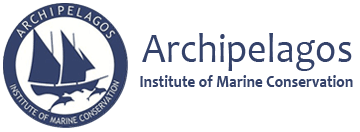Bioacoustics is a field in biology that studies the way that sound is produced, dispersed and received by animals. Marine mammals are highly reliant on acoustics, due to the low reliability of other available senses, especially sight, in underwater environments. Furthermore, sound travels nearly five times faster in seawater than in air.

Dolphin acoustics are separated into three different signals: whistles, clicks and burst pulses (Figure 2). Whistles are tonal signals that are used for communication, clicks are short, high frequency sounds mainly used for echolocation (used for navigation, foraging and hunting) and burst pulses consist of a sequence of broadband pulses that are often used during socialising. It has been proven that the increase of anthropogenic noise in the ocean can impact these signals and therefore affect both the communication and behaviour of marine mammals (Figure 4). Consequently, the assessment of acoustic noise is essential for both the protection of cetaceans and the preservation of marine ecosystems.
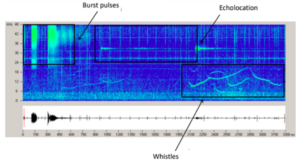
To collect bioacoustics data, the team at Archipelagos use an Aquarian AS1 hydrophone with a TASCAM recorder/PA-4 preamplifier. The data is then recorded by one person who listens to real-time acoustic sounds from the hydrophone. The information on all the different sounds that can be heard is then transcribed on a data sheet and transferred into the main database once the survey is finished.

The Bioacoustics team at Archipelagos is currently focusing on the investigation of ambient noise in the eastern Aegean Sea. Currently we are carrying out comparative analysis of acoustic recordings from 2017 to 2021 with the aim to compare the levels of noise pollution in different areas around the Aegean Sea. The exponential increase of boat traffic and other sources of anthropogenic pollution may have a crucial impact on marine mammals’ health. Bioacoustics data combined with marine traffic data can provide an overview of the impact of boats on the soundscape around the locations studied. Furthermore, this data is also being used to study the impact of anthropogenic noise on the different acoustic signals produced by dolphins.. Additionally, correlations could be made between differences in anthropogenic noise around the studied areas and species’ presence, distribution, as well as potential changes in their behaviour and communication. More recently, the impact of Covid must also be studied to assess how the global pandemic has impacted the general ambient sound in the oceans.
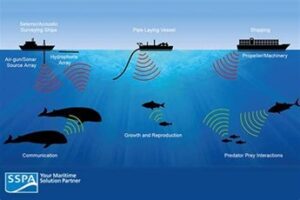
Another important project in this field is the investigation of the soundscape around the island of Lipsi. Kayak surveys were conducted and recordings from different locations around the island were collected and analysed. Our main objective is to identify the noise pollution in each location and evaluate the ambient sound, providing information about the anthropogenic noise pollution and biotic and abiotic sounds around the island.
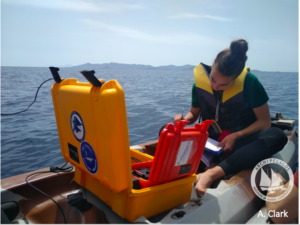
To conclude, bioacoustics is a field of research used to study the communication of animals, including marine mammals. The projects we carry out at Archipelagos Institute focus on identifying biotic, abiotic and anthropogenic noises, as well as the impact of boat traffic and fish farm activity on dolphin acoustics. The aim is to increase our comprehension of the impacts of noise pollution on marine mammal populations using our results in conservation efforts to protect these charismatic marine species .
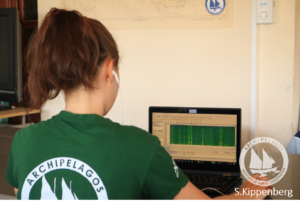
By
Judith Desmet, BSc. Environmental Sciences and Biotechnology at HOGENT, Belgium;
Konstantina Bairaktari, BSc. Biology at National and Kapodistrian University of Athens, Greece;
Sophia Kohler, BSc. Sciences and Environmental Engineering at EPFL, Switzerland
